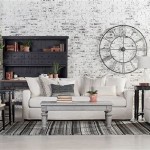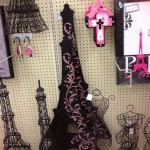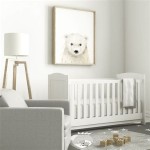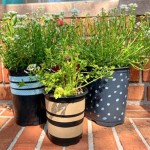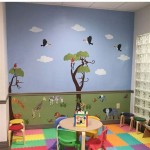Elevating Your Dining Room: Wall Decoration Strategies
The dining room serves as a central hub for families and a welcoming space for guests. Its ambiance significantly impacts the dining experience. Wall decorations play a crucial role in establishing the desired mood, reflecting personal style, and complementing the room's overall design. Thoughtful consideration of color, texture, and layout is paramount to achieving a harmonious and aesthetically pleasing dining room.
Effective wall décor extends beyond mere ornamentation. It influences the perception of space, contributes to acoustic comfort, and can even stimulate conversation. The selection process should involve a comprehensive assessment of the room's existing features, including furniture style, lighting, and architectural elements. Ultimately, the goal is to create a space that is both visually appealing and conducive to enjoyable dining experiences.
Choosing the Right Artwork for Your Dining Room Wall
Artwork is a classic and versatile choice for dining room wall decoration. Its ability to convey emotion, evoke memories, and spark dialogue makes it a compelling addition to the space. However, selecting the appropriate artwork requires careful consideration of several factors, including size, subject matter, and framing.
The size of the artwork should be proportionate to the wall space. A small piece on a large wall may appear insignificant, while an oversized piece can overwhelm a smaller room. A general guideline is to choose artwork that occupies approximately two-thirds to three-quarters of the wall's width. In the case of multiple pieces, the combined dimensions should adhere to this principle.
The subject matter of the artwork should align with the desired ambiance of the dining room. Landscapes, still lifes, and abstract pieces are popular choices, each offering a unique aesthetic. Landscapes can create a sense of serenity and openness, while still lifes often evoke feelings of warmth and abundance. Abstract art can add a touch of modernity and sophistication. It is important to consider the overall color palette of the room when selecting artwork to ensure visual harmony.
Framing plays a crucial role in enhancing the artwork's impact. The frame should complement both the artwork and the room's decor. Simple, understated frames are often suitable for contemporary spaces, while more ornate frames may be appropriate for traditional settings. The color and material of the frame should also be carefully considered to ensure that it does not detract from the artwork itself.
When hanging artwork, it is important to maintain an appropriate eye level. A general rule of thumb is to hang the artwork so that its center is approximately 60 inches from the floor. However, this may need to be adjusted based on the height of the room and the size of the artwork. It is also important to ensure that the artwork is securely fastened to the wall to prevent accidents.
Exploring Alternative Wall Decor Options
Beyond traditional artwork, a variety of alternative wall decor options can enhance the dining room's aesthetic appeal. These options include mirrors, wall tapestries, decorative plates, and even botanical displays. Each of these alternatives offers a unique way to personalize the space and create a distinctive atmosphere.
Mirrors are an excellent choice for adding depth and dimension to a dining room. They can reflect light, making the room appear brighter and more spacious. A large mirror placed on a focal wall can create a dramatic effect, while smaller mirrors can be strategically positioned to reflect specific features in the room. The shape and style of the mirror should complement the room's overall decor. Ornate, antique mirrors can add a touch of elegance, while sleek, modern mirrors can enhance a contemporary aesthetic.
Wall tapestries offer a textural element that can add warmth and visual interest to a dining room. They are available in a wide range of materials, patterns, and sizes, allowing for considerable personalization. Tapestries can be used to create a focal point on a wall or to add subtle texture to a more muted space. The choice of tapestry should be consistent with the room's color scheme and overall style. For instance, a rustic dining room might benefit from a tapestry featuring natural fibers and earthy tones, while a more formal dining room could showcase a tapestry with intricate patterns and rich colors.
Decorative plates can be arranged on the wall to create a unique and visually appealing display. This option allows for considerable creativity, as plates can be mixed and matched to create a personalized arrangement. The plates can be hung individually or grouped together to form a larger design. The selection of plates should be guided by the room's overall color palette and style. Antique plates can add a touch of vintage charm, while modern plates with geometric patterns can enhance a contemporary aesthetic. Plate hangers are typically used to securely attach the plates to the wall.
Botanical displays offer a natural and refreshing element to the dining room. These displays can include framed botanical prints, dried flower arrangements, or even living plants mounted on the wall. Botanical prints can add a touch of elegance and sophistication, while dried flower arrangements can create a rustic and charming atmosphere. Living plants can purify the air and add a sense of vitality to the space. When incorporating living plants into wall decor, it is important to choose species that are well-suited to the room's lighting conditions and humidity levels. Consider using wall-mounted planters or shelves to display the plants effectively.
Maximizing Impact with Strategic Placement and Lighting.
The strategic placement of wall decorations and the integration of appropriate lighting are critical for maximizing their impact on the dining room's aesthetic. Even the most well-chosen decorations can appear lackluster if they are not positioned correctly or if they are poorly illuminated. Careful consideration of these factors can elevate the dining room's ambiance and create a more inviting and visually appealing space.
The placement of wall decorations should be guided by the room's focal points and architectural features. Identifying the room's natural focal points, such as a fireplace or a large window, can help determine the most appropriate areas for showcasing wall decorations. In the absence of a clear focal point, one can be created by strategically positioning a large piece of artwork or a grouping of smaller decorations. It is important to avoid overcrowding the walls, as this can create a cluttered and overwhelming effect. Instead, strive for a balanced and harmonious arrangement that allows each decoration to stand out.
The height at which wall decorations are hung is also crucial. As previously mentioned, a general rule of thumb is to hang artwork so that its center is approximately 60 inches from the floor. However, this may need to be adjusted based on the height of the room and the size of the artwork. It is also important to consider the proximity of furniture when determining the placement of wall decorations. Avoid hanging decorations too close to furniture, as this can create a cramped and uncomfortable feeling. A distance of at least 6-12 inches between the bottom of the decoration and the top of the furniture is generally recommended.
Lighting plays a crucial role in enhancing the visual impact of wall decorations. Properly illuminated decorations will stand out and create a more dramatic effect. There are several lighting options to consider, including accent lighting, spotlights, and picture lights. Accent lighting can be used to highlight specific features of the wall decorations, such as the texture or color. Spotlights can be used to create a more focused beam of light, drawing attention to a particular piece of artwork. Picture lights are specifically designed to illuminate artwork and are typically mounted directly above the piece.
The type of light bulb used can also affect the appearance of wall decorations. Incandescent bulbs produce a warm, yellowish light that can enhance the colors of artwork. Halogen bulbs produce a brighter, whiter light that can be used to create a more dramatic effect. LED bulbs are energy-efficient and available in a variety of color temperatures, allowing for considerable flexibility in lighting design. When choosing light bulbs, it is important to consider the overall color palette of the room and the desired ambiance. Dimmers can also be used to adjust the lighting levels, allowing for greater control over the mood of the dining room.
In addition to artificial lighting, natural light can also enhance the appearance of wall decorations. Position wall decorations near windows to take advantage of natural light. However, it is important to be aware that direct sunlight can fade or damage certain types of decorations, such as tapestries or artwork. Consider using curtains or blinds to control the amount of sunlight that enters the room.

Dining Room Wall Decor Kitchen Prints The Best Memories Are Made Gathered Around Table Farmhouse Printable Art

12 Dining Room Accent Wall Ideas Cornerstone Remodeling

25 Wall Decor Ideas To Spruce Up Your Dining Room Society6

Wall Decor Options For This Blank Dining Room Designed

54 Simple Dining Room Wall Decor Ideas Displate Blog

Spring Dining Room Decor Tour 2025 Thrifty And Chic

60 Modern Dining Room Wall Decor Ideas Designs For 2025

Modern Dining Room Wall Art Ideas Minted

Neutral Dining Room Makeover Inspired By Artwork

Dining Room Wall Decor Ideas For Your Home
Related Posts

